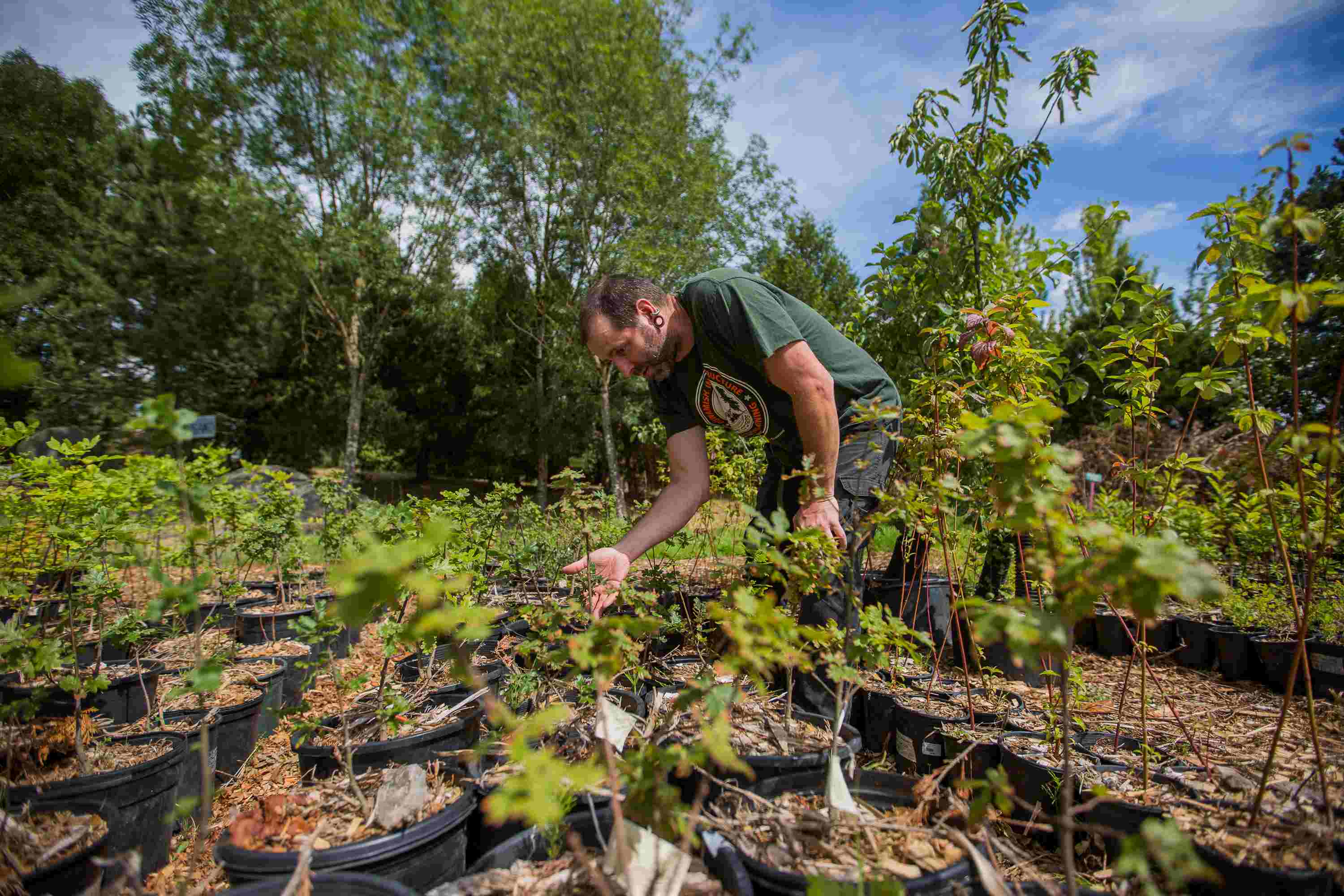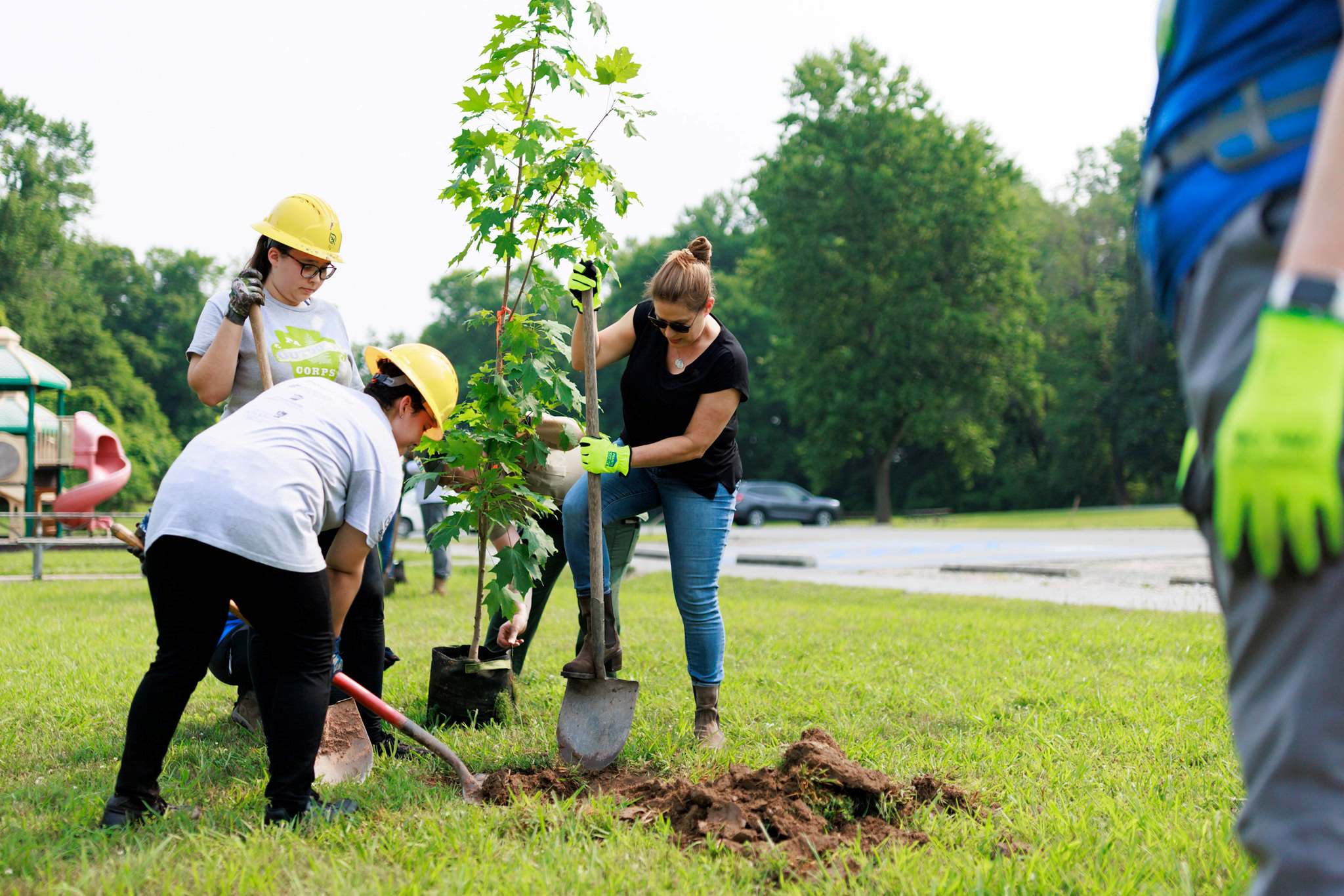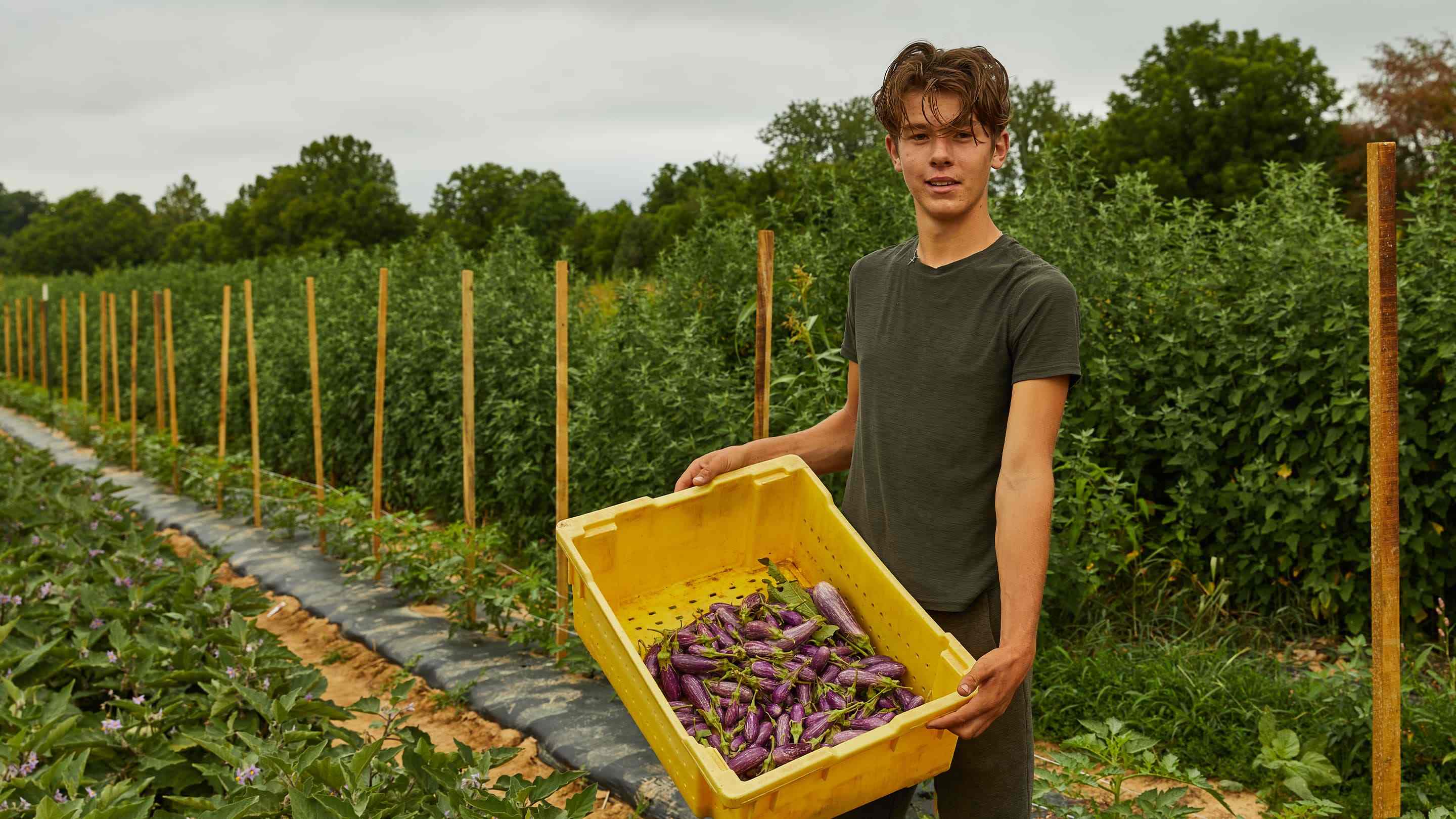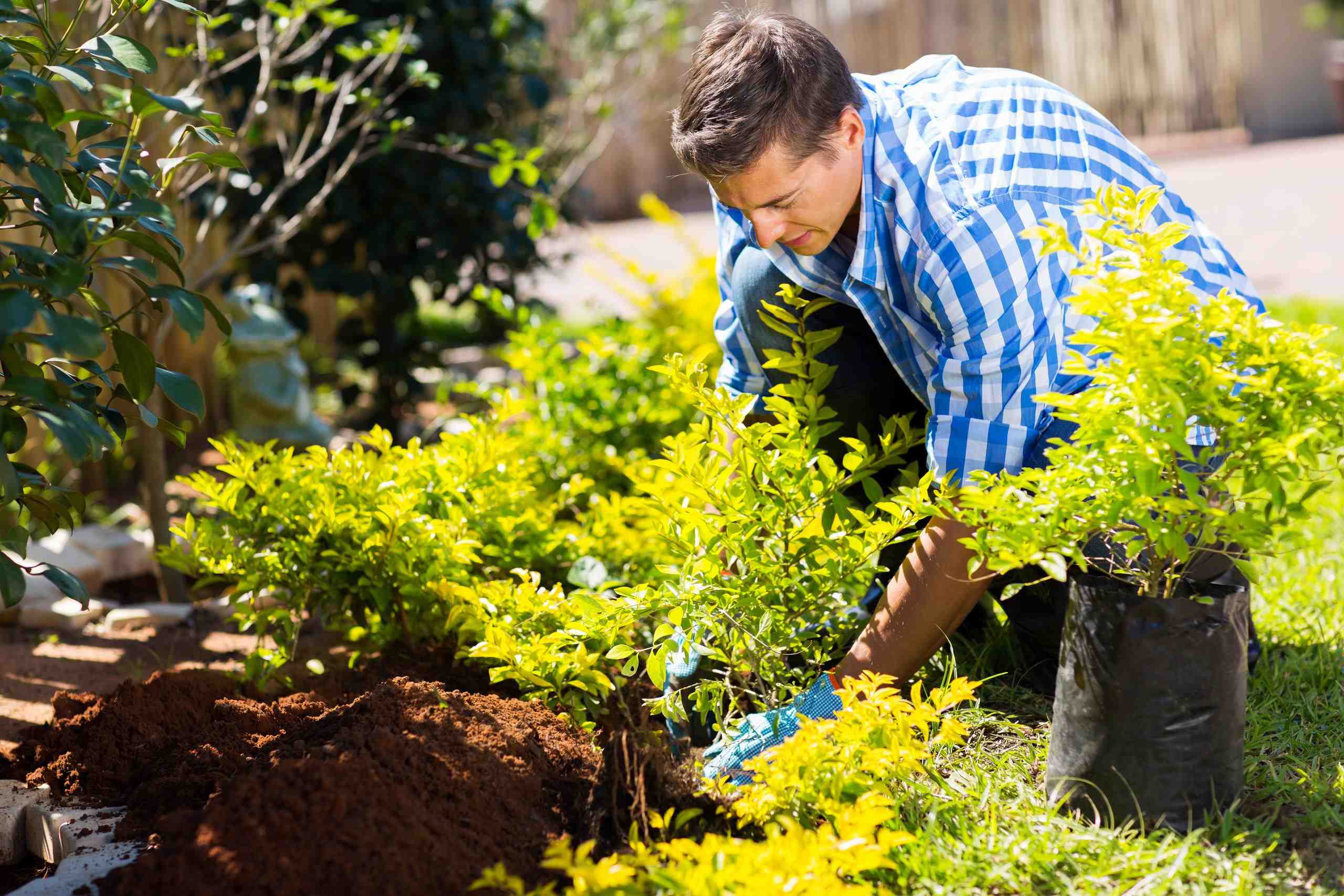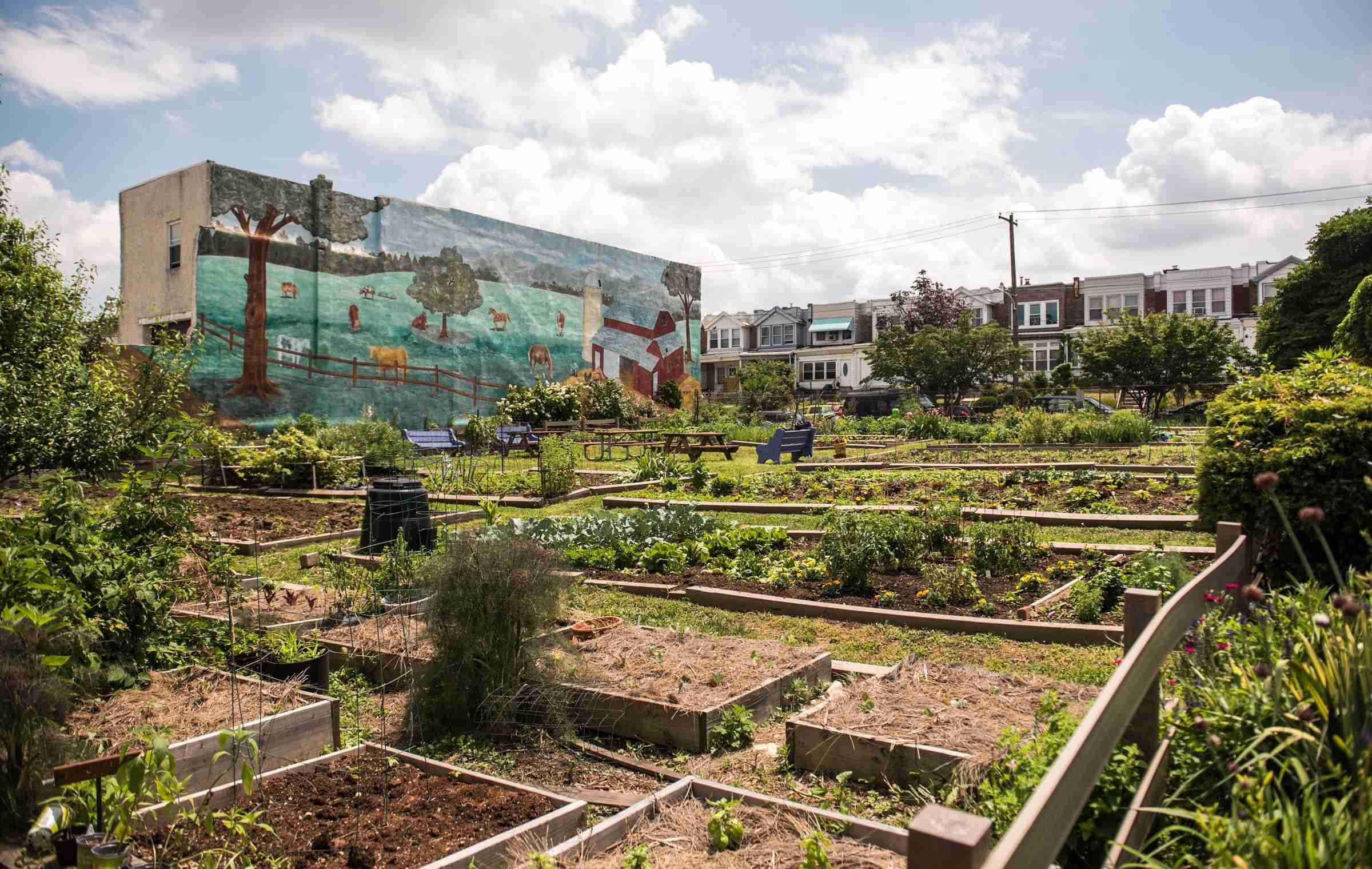Home>Gardening Basics>Understanding Soil>What Planting Zone Is Brooklyn, NY


Understanding Soil
What Planting Zone Is Brooklyn, NY
Modified: February 10, 2024
Find out the planting zone for Brooklyn, NY and learn how understanding soil can help your garden thrive. Discover the best strategies for successful gardening in this region.
(Many of the links in this article redirect to a specific reviewed product. Your purchase of these products through affiliate links helps to generate commission for Chicagolandgardening.com, at no extra cost. Learn more)
Table of Contents
Introduction
Welcome to the vibrant and diverse borough of Brooklyn, New York! With its bustling neighborhoods, rich cultural heritage, and thriving urban landscape, Brooklyn offers a unique environment for gardening enthusiasts. Whether you are a novice or an experienced gardener, understanding the planting zones in Brooklyn is crucial for successful plant cultivation.
Planting zones are geographical regions that are defined based on climatic conditions and help determine the types of plants that can thrive in a particular area. By identifying the specific planting zone in Brooklyn, you can select plants that are best suited for the local climate, soil conditions, and growing season.
The United States Department of Agriculture (USDA) has developed a plant hardiness zone map that divides the country into various planting zones. These zones are determined by the average annual minimum temperatures, which provide guidance on the types of plants that can withstand the winter cold in a particular region.
However, it is important to note that planting zones are not the only factor to consider when planning your garden in Brooklyn. There are other variables, including microclimates and local variations in soil composition and drainage, that can affect plant growth. Understanding these factors and their impact on plant health is crucial for creating a successful garden.
In this article, we will delve deeper into the concept of planting zones, explore the climatic conditions of Brooklyn, and discover the specific planting zone for this vibrant borough. Additionally, we will provide insights into the best plants to grow in Brooklyn and offer valuable tips for gardening in this unique urban environment. So, let’s dive in and explore the world of gardening in Brooklyn!
Understanding Planting Zones
Planting zones are an essential tool for gardeners to determine which plants are most likely to thrive in a specific location. These zones are based on the average annual minimum temperatures and serve as a guideline for selecting plants that can withstand the cold winter temperatures of a region.
The United States is divided into 11 main planting zones, ranging from zone 1, which experiences the coldest temperatures, to zone 11, which has the mildest winters. Each zone is further divided into two subsets: a and b, with “a” representing the colder half of the zone and “b” denoting the warmer half.
When selecting plants for your garden, it’s crucial to choose varieties that are recommended for your specific planting zone. Choosing plants that are not suitable for your zone may result in poor growth, susceptibility to diseases, or even plant death. By understanding the climate of your area and the corresponding planting zone, you can make informed decisions about suitable plant choices.
It’s important to note that planting zones should not be the sole determining factor when selecting plants. Other factors such as humidity, precipitation, soil type, and exposure to sunlight also play a crucial role. Microclimates within a garden can also influence plant success, especially in diverse urban areas like Brooklyn.
One way to identify your specific planting zone is to consult the USDA Plant Hardiness Zone Map. This map provides a visual representation of the different zones across the United States. By finding your location on the map, you can determine which zone your area falls into. However, keep in mind that microclimates within your neighborhood, such as the proximity to bodies of water or buildings, can create variations in temperature and affect plant growth.
Understanding planting zones is essential for successful gardening. By selecting plants that are well-suited to your zone, you increase their chances of thriving and producing abundant blooms or delicious harvests. It’s also important to consider factors beyond the planting zone, such as local climate conditions and the specific needs of each plant species.
Now that we have a better understanding of the concept of planting zones, let’s explore the specific planting zone of Brooklyn, New York, and the factors that influence plant growth in this urban environment.
Planting Zone Classification System
The planting zone classification system is a valuable tool for gardeners to determine which plants are best suited for their specific climate conditions. The system provides a standardized way to categorize regions based on average annual minimum temperatures, allowing gardeners to select plants that can withstand the winter cold in their area.
The United States Department of Agriculture (USDA) developed the most widely used planting zone map, known as the USDA Plant Hardiness Zone Map. This map divides the country into 11 main zones, ranging from zone 1 (the coldest) to zone 11 (the warmest). Each zone is further divided into a and b subsets, representing slight variations in temperature within the main zone.
To determine the planting zone of a specific area, the USDA uses historical weather data and average annual minimum temperatures. These temperatures represent the lowest temperatures recorded in a given region and help classify it into the corresponding zone. The USDA Plant Hardiness Zone Map is regularly updated to reflect changing weather patterns and new data.
Planting zones provide useful information about the types of plants that can thrive in different climates. For example, plants that are better adapted to colder temperatures, such as coniferous trees or certain varieties of perennials, are typically recommended for zones with harsh winters, like zone 3 or below. On the other hand, plants that require warmer temperatures, such as tropical plants or heat-loving annuals, are better suited for zones 9 to 11.
It’s important to note that the planting zone classification system is just one factor to consider when selecting plants for your garden. Other environmental factors, such as sunlight, humidity, and soil type, also influence plant growth and survival. Microclimates within a garden can create variations in temperature and humidity, allowing for the cultivation of plants that may not typically thrive in a specific zone.
Gardeners should also keep in mind that the planting zone map provides broad guidelines, and local conditions may differ. In urban areas like Brooklyn, where microclimates can vary significantly, it’s essential to consider factors such as proximity to water bodies, wind exposure, and heat retention from buildings when selecting plants.
By understanding the planting zone classification system, gardeners in Brooklyn can make informed decisions about the types of plants that are most likely to thrive in their specific climate conditions. In the next section, we will explore the climate of Brooklyn, New York, and the specific planting zone for this vibrant borough.
Factors Affecting Planting Zones
While the USDA planting zone map is a helpful guide for gardeners, it’s important to recognize that multiple factors can influence plant growth and the suitability of specific plants for a given area. Here are some of the key factors that can affect planting zones:
1. Average Annual Minimum Temperatures: The USDA planting zone map is primarily based on average annual minimum temperatures. However, extreme temperatures, including sudden cold snaps or heatwaves, can influence plant health and survival. Microclimates within a region can also create variations in temperature, resulting in localized differences in plant growth.
2. Frost Dates: Frost dates, including the last spring frost and the first fall frost, play a crucial role in determining when to plant certain crops and tender perennials. These dates can vary within a planting zone, influenced by factors such as elevation, proximity to water bodies, and the urban heat island effect.
3. Precipitation and Humidity: The amount and distribution of rainfall and humidity levels can significantly impact plant growth. Some plants thrive in areas with higher rainfall and humidity, while others are more adapted to drier conditions. Local variations in precipitation patterns, such as the influence of nearby bodies of water or urban development, can create microclimates with different moisture levels.
4. Soil Type and Composition: Soil characteristics, including texture, drainage, fertility, and pH levels, can greatly affect plant growth. Different plants have unique soil preferences, and understanding the soil conditions of your garden is essential for selecting suitable plants. Urban environments, such as Brooklyn, may have variations in soil types due to construction, landscaping, and soil contamination.
5. Sun Exposure: The amount of sunlight plants receive can impact their growth and vigor. Some plants thrive in full sun, while others prefer partial or full shade. Buildings, trees, and other structures can create shade or block sunlight in urban environments, leading to variations in sun exposure and potentially affecting plant selection.
6. Wind and Microclimate: Wind can affect plant growth by causing desiccation, damaging foliage, and altering microclimate conditions. Microclimates within a garden or neighborhood can differ due to factors such as wind patterns, the presence of tall buildings, or nearby bodies of water. These microclimates can create pockets of different temperatures, humidity levels, and wind exposure, influencing plant suitability.
7. Urban Heat Island Effect: Urban areas tend to have higher temperatures compared to surrounding rural areas, known as the urban heat island effect. This can modify local climatic conditions, affecting plant growth and potentially expanding the range of plants that can be cultivated in these areas.
By considering these factors, gardeners in Brooklyn can make more informed decisions about the types of plants that are well-suited for their specific garden conditions. In the next section, we will explore the climate of Brooklyn, New York, and discover the specific planting zone for this vibrant borough.
Climate of Brooklyn, NY
Brooklyn, New York, experiences a humid subtropical climate with distinct seasonal variations. Its proximity to the Atlantic Ocean and its position within the northeastern United States contribute to its unique climate, characterized by relatively mild winters and hot, humid summers.
Winters in Brooklyn are generally mild compared to other parts of the United States, with average temperatures ranging from the mid-30s°F (1-3°C) to the mid-40s°F (7-9°C). However, periodic cold spells and occasional snowfall are not uncommon during the winter months. The average annual snowfall in Brooklyn is approximately 25 inches (64 cm).
Spring brings gradually warming temperatures, with average highs ranging from the mid-50s°F (13-15°C) to the mid-70s°F (21-24°C). This is an optimal time for planting cool-season crops and early blooming perennials.
Summers in Brooklyn are hot and humid, with average highs consistently in the 80s°F (27-32°C) and sometimes reaching into the 90s°F (32-37°C). Heatwaves and high humidity can make the temperatures feel even hotter. Adequate watering and careful plant selection for heat tolerance are crucial during this time.
Autumn brings mild temperatures with crisp, cool air and vibrant foliage colors. Average highs range from the 60s°F (15-20°C) to the 70s°F (21-24°C) before gradually cooling down in preparation for winter. Fall is an excellent time for planting cool-season vegetables and perennials, as well as enjoying the changing colors of the leaves.
Brooklyn, like many urban areas, experiences the urban heat island effect, which means that it can be slightly warmer than surrounding rural areas. Buildings, pavement, and the increased concentration of human activities contribute to this phenomenon. As a result, gardeners in Brooklyn should consider the impact of the urban heat island effect on microclimates within their specific locations.
Understanding the climate of Brooklyn is essential for selecting plants that can thrive in this specific environment. The next section will explore the specific planting zone of Brooklyn, New York, providing valuable insights into the types of plants that are most suitable for this vibrant borough.
Planting Zone of Brooklyn, NY
The specific planting zone of Brooklyn, New York, is classified as USDA Zone 7b. This planting zone is characterized by average annual minimum temperatures ranging from 5°F to 10°F (-15°C to -12°C).
Being in Zone 7b means that Brooklyn has relatively mild winters compared to northern regions of the United States. However, gardeners should still be prepared for occasional cold spells and the need to protect sensitive plants during extreme cold conditions.
With its planting zone classification, Brooklyn provides a favorable environment for a wide range of plant species. Gardeners can grow a variety of trees, shrubs, annuals, perennials, and vegetables that are well-suited to temperate climates.
Some popular plant options for Zone 7b in Brooklyn include:
- Deciduous Trees: Maple, Dogwood, Magnolia, Oak
- Evergreen Trees: Pine, Spruce, Juniper, Arborvitae
- Shrubs: Azalea, Hydrangea, Rhododendron, Witch Hazel
- Perennials: Hosta, Daylily, Coneflower, Black-eyed Susan
- Annuals: Petunia, Marigold, Zinnia, Impatiens
- Vegetables: Tomato, Peppers, Cucumber, Lettuce
It is important to consider other factors, such as microclimates within the borough, sun exposure, soil type, and water availability when selecting plants for your garden. These factors can create variations in growing conditions, allowing for the cultivation of a diverse range of plants beyond the typical recommendations for Zone 7b.
Furthermore, the urban heat island effect in Brooklyn may slightly influence the local climate, resulting in higher temperatures in certain areas. Gardeners should take this into account when choosing plants and be mindful of any microclimatic conditions that may exist within their specific garden space.
Understanding the planting zone of Brooklyn, New York, allows gardeners to make informed choices regarding plant selection, ensuring the best chances of success for their gardens. In the next section, we will explore some of the best plants that thrive in the climate and planting zone of Brooklyn.
Best Plants for Brooklyn, NY
Brooklyn, New York, with its USDA Zone 7b classification, offers a favorable climate for a wide range of plants. Whether you have a small balcony garden or a spacious backyard, here are some of the best plant options that thrive in the climate and planting zone of Brooklyn:
1. Perennials: Some popular perennials for Brooklyn include Daylilies, Coneflowers, Hostas, Black-eyed Susans, and Sedums. These plants are known for their ability to withstand the varying temperatures and provide colorful blooms year after year.
2. Trees and Shrubs: Brooklyn’s mild climate is suitable for a variety of trees and shrubs. Consider planting Dogwoods, Magnolias, Maples, Rhododendrons, and Azaleas to add height, structure, and vibrant colors to your garden.
3. Annuals: Annual plants provide seasonal splashes of color. Marigolds, Impatiens, Zinnias, Petunias, and Cosmos are popular choices that thrive in the warm summers of Brooklyn. They can be easily planted in flower beds, containers, or hanging baskets.
4. Herbs and Vegetables: Brooklyn gardeners can enjoy a bountiful harvest by growing herbs and vegetables suited for Zone 7b. Tomatoes, Peppers, Lettuce, Cucumbers, and Herbs like Basil, Rosemary, and Thyme are excellent choices for fresh, homegrown produce and culinary delight.
5. Native Plants: Incorporating native plants into your garden not only supports the local ecosystem but also helps create a low-maintenance and sustainable landscape. Native species such as Eastern Red Cedar, Virginia Bluebells, Black-Eyed Susans, and Milkweed provide beauty, attract pollinators, and are well-adapted to the local conditions.
6. Container Plants: If space is limited, container gardening is a great option. Fill your patio or balcony with container plants like Dwarf Citrus trees, Dwarf Roses, Dwarf Boxwood, and Herbs. These plants can thrive in containers while adding beauty and greenery to your outdoor space.
Remember to consider the specific requirements of each plant, such as sun exposure, soil type, and watering needs, when planning your garden. Also, be open to experimenting with different plants to find what works best for your specific microclimate within Brooklyn.
By selecting the best plants for Brooklyn, gardeners can create vibrant and flourishing landscapes that bring joy and beauty for years to come. In the next section, we will provide some valuable tips for gardening in the unique urban environment of Brooklyn, NY.
Tips for Gardening in Brooklyn, NY
Gardening in the unique urban environment of Brooklyn requires some special considerations. Here are some helpful tips to make the most of your gardening experience:
1. Understand Your Microclimate: Brooklyn’s diverse neighborhoods can have variations in temperature, humidity levels, and sun exposure. Take the time to observe your garden and understand the microclimate within your specific location. This will help you choose plants that are better suited to your garden’s conditions.
2. Maximize Space: With limited space in urban areas, it’s important to make the most of what you have. Utilize vertical gardening techniques with hanging baskets, trellises, and wall-mounted planters. Consider container gardening to make use of balconies and rooftops. Raised beds can also optimize space in small backyard gardens.
3. Soil Improvement: Brooklyn’s soil can vary in quality and composition. Before planting, assess your soil and make necessary amendments to improve its fertility and drainage. Adding organic matter, such as compost or well-decomposed manure, can enhance the soil’s structure and nutrient content.
4. Watering Considerations: Brooklyn’s climate experiences both rainy and dry periods. Be mindful of watering needs, especially during hot summer months. Water deeply but infrequently to encourage deep root growth and plant resilience. Consider using mulch to conserve moisture and prevent weed growth.
5. Companion Planting: In an urban garden, companion planting can be beneficial. By intermixing compatible plants, you can deter pests, attract beneficial insects, and maximize space utilization. For example, planting marigolds near vegetables can help repel pests, while planting herbs like basil or dill can attract pollinators.
6. Integrated Pest Management (IPM): Managing pests in an urban garden is crucial. Embrace IPM techniques, such as handpicking pests, using organic insecticides if necessary, and encouraging natural predators like ladybugs or birds. Regularly inspect your plants for signs of pests or diseases to address issues early on.
7. Season Extension: Brooklyn’s relatively mild climate allows for extended growing seasons. Consider using season extension techniques like cold frames, row covers, or mini greenhouses to protect plants and continue growing during cooler months. This can increase the variety and duration of your harvests.
8. Community Resources: Take advantage of community gardens, farmers’ markets, and local horticulture organizations in Brooklyn. These resources can provide valuable information, exchange of ideas, and opportunities to establish connections with fellow gardeners in your neighborhood.
Gardening in Brooklyn offers unique challenges and opportunities. By understanding your specific microclimate, optimizing space, improving soil health, practicing efficient watering, embracing companion planting and IPM techniques, extending the growing season, and utilizing community resources, you can create a thriving and beautiful garden in this urban environment.
With these tips and your passion for gardening, you can enjoy the benefits of nature and create a green oasis right in the heart of Brooklyn. Happy gardening!
Conclusion
Gardening in Brooklyn, New York, offers a unique and exciting opportunity to cultivate beautiful and thriving gardens in an urban environment. By understanding the planting zone, climate, and factors that influence plant growth, gardeners can make informed decisions when selecting plants and creating their garden space.
Brooklyn falls within USDA Zone 7b, which provides a mild climate suitable for a wide range of plant species. From perennials and trees to annuals and vegetables, there are plenty of options for every gardener’s preference and gardening style.
It’s important to remember that planting zones are just one factor to consider when planning a garden. Other factors such as microclimates, soil types, sun exposure, and watering needs also play a crucial role in plant health and success.
By following the tips for gardening in Brooklyn, including understanding your microclimate, maximizing space, improving soil health, managing pests, and utilizing season extension techniques, you can create a thriving and beautiful urban garden.
Additionally, don’t forget to take advantage of the community resources available in Brooklyn, such as community gardens, farmers’ markets, and local horticulture organizations. These resources provide valuable knowledge, support, and the opportunity to connect with fellow gardeners.
So, unleash your creativity, get your hands dirty, and enjoy the beauty and rewards of gardening in Brooklyn, New York. Happy gardening!
